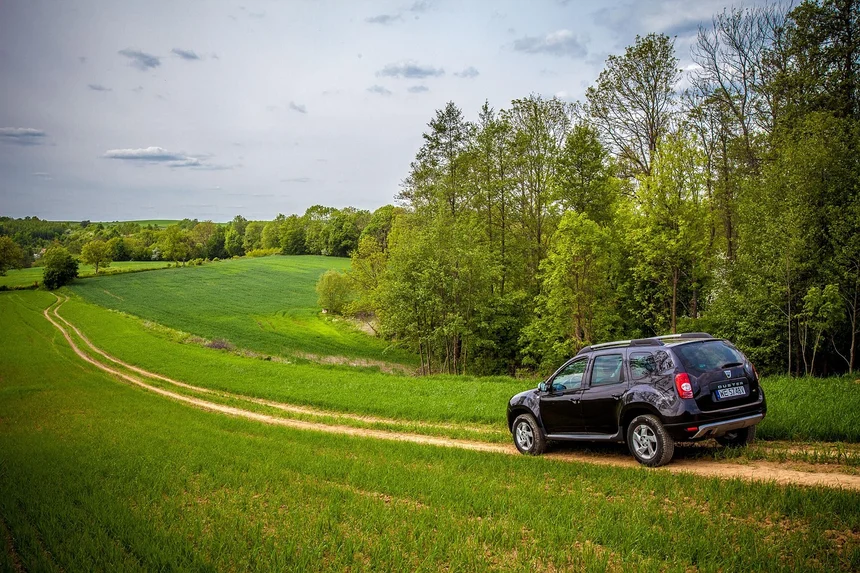Discover How Pay-As-You-Go Car Insurance Can Save You Big Bucks!
- Apr 18,2025
Are you tired of paying high premiums for car insurance that doesn't reflect your actual driving habits? The solution is here: Pay-as-you-go (PayG) car insurance! This innovative insurance model means you only pay for the miles you drive, making it a fantastic option for those who don’t hit the road often. The answer is simple: if you drive less, you pay less! Imagine saving money just by being a low-mileage driver - sounds great, right? In this guide, we’ll explore how PayG insurance works, who benefits the most, and share tips on maximizing your savings. Get ready to discover a smarter way to insure your ride!
E.g. :Does Insurance Follow the Car or the Driver? Unraveling the Truth Behind Auto Coverage
- 1、🚗 Pay-As-You-Go Car Insurance: The Smart Driver's Guide
- 2、💡 What Exactly is PayG Car Insurance?
- 3、📱 How PayG Insurance Actually Works
- 4、🌟 Who Benefits Most From PayG Insurance?
- 5、⚠️ Potential Drawbacks to Consider
- 6、💸 How to Maximize Your PayG Savings
- 7、🔮 The Future of PayG Insurance
- 8、🤔 Should You Switch to PayG Insurance?
- 9、FAQs
🚗 Pay-As-You-Go Car Insurance: The Smart Driver's Guide
💡 What Exactly is PayG Car Insurance?
🔍 The Basics of Usage-Based Insurance
Ever feel like you're paying too much for car insurance when your vehicle mostly collects dust in the driveway? Pay-as-you-go (PayG) insurance is like Netflix for your car - you only pay for what you actually use! Instead of fixed monthly premiums, your costs adjust based on your real driving habits.
Here's how it works in simple terms: The less you drive, the less you pay. Insurance companies track your mileage and driving behavior through a small device in your car or a smartphone app. This means weekend warriors and city dwellers can save big compared to traditional insurance plans. Think of it as getting rewarded for being a low-mileage driver!
⚡ How It's Different From Traditional Insurance
Traditional insurance is like an all-you-can-eat buffet - you pay the same price whether you eat one plate or ten. PayG insurance? That's like ordering à la carte. Let me break it down:
| Feature | Traditional Insurance | PayG Insurance |
|---|---|---|
| Pricing | Fixed monthly rate | Variable based on miles driven |
| Best For | Daily commuters | Occasional drivers |
| Savings Potential | Limited discounts | Up to 30% for low-mileage drivers |
I recently switched my college student daughter to PayG insurance and we're saving about $40/month - that's nearly $500/year! Not too shabby for just driving less.
📱 How PayG Insurance Actually Works
 Photos provided by pixabay
Photos provided by pixabay
🔧 The Technology Behind the Scenes
You might be wondering: "How do they track my driving without being creepy about it?" Great question! Most companies use either:
1. A small telematics device that plugs into your car's OBD-II port (usually under the dashboard)
2. A smartphone app that uses your phone's sensors
3. Some combination of both
These tools track things like:
• Miles driven
• Time of day you drive
• Hard braking incidents
• Average speed
But don't worry - they're not recording your conversations or tracking your exact location 24/7. The data focuses on driving patterns, not personal details.
💰 The Payment Structure Explained
Here's where it gets interesting. Most PayG plans have two parts:
1. A small base rate (like $29/month)
2. A per-mile charge (typically 5-10¢ per mile)
Let's do some math: If your base is $29 and you drive 300 miles at 7¢ per mile, your total would be $29 + $21 = $50 for the month. Compare that to a traditional policy at $100/month, and you're already saving 50%!
Pro tip: Many plans cap your maximum miles, so you'll never pay more than a traditional policy would cost. It's a win-win!
🌟 Who Benefits Most From PayG Insurance?
🏙️ City Dwellers & Public Transit Users
If you live in New York, Chicago, or another major city where parking costs more than your car payment, PayG insurance might be your new best friend. My cousin in San Francisco drives maybe twice a month - she's saving about 60% compared to her old policy!
Urban drivers typically:
• Walk or use public transit most days
• Only drive for weekend getaways or big grocery runs
• Have shorter commutes when they do drive
Sound like you? You're probably the perfect PayG candidate.
 Photos provided by pixabay
Photos provided by pixabay
🔧 The Technology Behind the Scenes
Remember when you needed that minivan for soccer practice and carpools? Those days are gone! Many retirees find they drive significantly less after leaving the workforce.
Here's a funny story: My neighbor Bob retired last year and switched to PayG insurance. He and his wife now plan their errands more efficiently and even started biking to the grocery store - saving money while getting healthier! They cut their insurance bill in half while rediscovering their neighborhood.
⚠️ Potential Drawbacks to Consider
🔐 Privacy Concerns (And How to Manage Them)
"But wait," you might ask, "do I really want an insurance company tracking my every move?" Fair concern! Here's the reality:
• Most companies only collect driving data - not personal location history
• You can usually opt out of certain tracking features
• The data is encrypted and protected like your bank information
If privacy is your top priority, look for companies that offer:
• Clear data usage policies
• Ability to delete your data
• Options to limit what's tracked
🚗 Not Ideal For High-Mileage Drivers
Let's be honest - if you're an Uber driver or have a long daily commute, PayG might not save you money. In fact, it could cost more than traditional insurance. Here's a quick way to check:
Calculate your average monthly miles. If it's over 1,000, traditional insurance is probably better. Under 500? PayG could be your golden ticket to savings.
💸 How to Maximize Your PayG Savings
 Photos provided by pixabay
Photos provided by pixabay
🔧 The Technology Behind the Scenes
Want to really squeeze every penny of savings from your PayG policy? Try these tips:
1. Bundle trips - Instead of three short trips, make one slightly longer one
2. Avoid peak hours - Some plans charge more for rush hour driving
3. Use alternative transport - That bike in your garage could pay for itself in insurance savings!
I started taking the bus to work twice a week and saved enough to treat myself to a nice dinner each month. Talk about motivation!
🎯 Choosing the Right Plan For You
Not all PayG plans are created equal. When shopping around, ask about:
• Base rate vs. per-mile costs
• Any hidden fees
• Mileage caps or limits
• Discounts for safe driving
• Customer service reputation
Remember: The cheapest option isn't always the best. Look for a balance of fair pricing and good service.
🔮 The Future of PayG Insurance
🚀 Emerging Trends & Technologies
PayG insurance is evolving fast! Here's what's coming soon:
• Integration with smart cars - Your vehicle will automatically report data
• Real-time feedback - Get alerts when you brake too hard
• Community discounts - Save more when neighbors drive less
Imagine getting a notification: "Great parking job! Here's $5 off your next bill." That future isn't far off!
🌱 Environmental Benefits
Here's something cool: PayG insurance is quietly helping the planet. Studies show users drive 5-10% less on average. That means:
• Fewer emissions
• Less traffic congestion
• Reduced wear on roads
So when you save money, you're also saving the environment. How's that for a win-win?
🤔 Should You Switch to PayG Insurance?
✅ The Decision Checklist
Still on the fence? Ask yourself:
1. Do I drive less than 10,000 miles/year?
2. Am I comfortable with mileage tracking?
3. Could I adjust my driving habits to save more?
If you answered yes to at least two, PayG might be worth a try. Many companies offer trial periods, so you can test it risk-free.
💡 Final Thoughts
At the end of the day, PayG insurance is about paying for what you actually use. Whether you're a city slicker, retiree, or just someone who prefers biking, it could put hundreds back in your pocket each year.
Why pay for a full tank when you only need a gallon? Give PayG a look - your wallet (and maybe the planet) will thank you!
In summary, Pay-as-you-go (PayG) car insurance is a game-changer for those of us who drive less and want to save money. By adjusting your costs based on actual driving habits, it offers a flexible alternative to traditional insurance. If you're like me and prefer a more tailored approach to your car insurance, then PayG could be the way to go. With savings of up to 30% for low-mileage drivers, it's hard to ignore the benefits. Plus, the technology behind it is user-friendly and respects your privacy, so you can drive with peace of mind.
Now that you know the ins and outs of PayG insurance, I encourage you to consider your own driving habits. Are you a city dweller or someone who only hits the road occasionally? If so, why not explore a PayG plan and see how much you could save? Don't forget to share your thoughts or experiences in the comments—I’d love to hear how PayG has worked for you or if you have any questions! Let's take control of our insurance costs together! 🚗💰
E.g. :Pay-As-You-Go Car Insurance | GoCompare
FAQs
What is Pay-As-You-Go car insurance?
Pay-As-You-Go (PayG) car insurance is a flexible insurance option where you only pay for the miles you actually drive. This means if you drive less, you pay less! It's perfect for occasional drivers or those who live in urban areas where they don't need to use their car often. By using a telematics device or a smartphone app, insurance companies track your mileage and driving habits, allowing you to save money compared to traditional fixed-rate plans.
How does PayG insurance save me money?
PayG insurance saves you money by adjusting your premium based on your actual driving behavior. If you drive fewer miles, your insurance costs decrease. Many users find they can save up to 30% on their premiums, especially if they are low-mileage drivers. For instance, my family saved nearly $500 a year by switching to PayG insurance, simply by reducing our driving habits!
Who is PayG car insurance best for?
PayG car insurance is ideal for city dwellers, retirees, and anyone who drives infrequently. If you primarily use public transportation or only drive for occasional errands, this type of insurance can significantly reduce your costs. I know a retiree who switched to PayG and cut his insurance bill in half while also rediscovering local biking routes, which has been great for his health!
Are there any drawbacks to PayG insurance?
While PayG insurance offers great savings, it may not be suitable for high-mileage drivers, like those who use their cars for work, such as rideshare drivers. If your driving exceeds 1,000 miles a month, traditional insurance might be more cost-effective. Additionally, some people have concerns about privacy since their driving habits are tracked. However, most companies only collect necessary data for calculating premiums, not personal information.
How can I maximize my PayG savings?
To maximize your PayG savings, focus on smart driving habits. Try bundling your trips to reduce the number of short drives, avoid peak hours, and consider alternative transport methods when possible. For example, I started taking the bus a couple of times a week and saved enough to enjoy a nice dinner out each month! Always shop around for the best plans, comparing base rates and per-mile charges to find the most suitable option for you.
